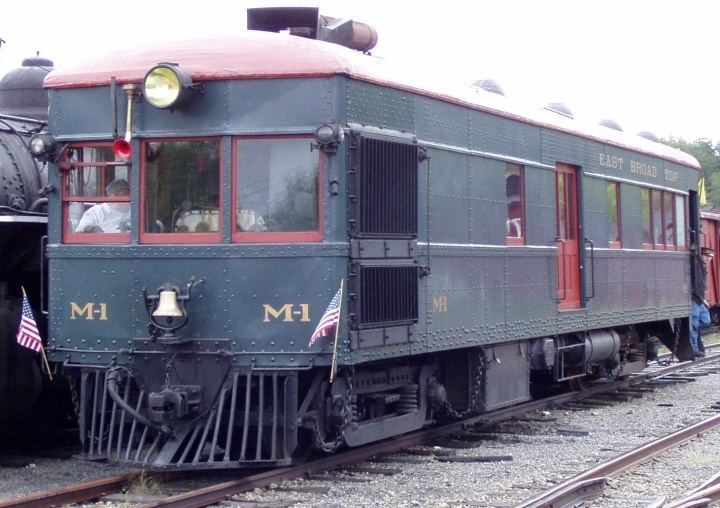Car body construction Coach/baggage combine | AAR wheel arrangement usually B-2 | |
 | ||
Manufacturer various, including EMC/Pullman, Brill/Mack, McKeen Motor Car Company, Rio Grande Southern Railroad Prime mover(s) various (gasoline, diesel) Transmission various (mechanical, electric, hydraulic) Track gauge 4 ft 8 ⁄2 in (1,435 mm) and 3 ft (914 mm) | ||
In the United States, doodlebug is the common name for a self-propelled railcar most commonly configured with both a passenger and freight compartment. Early models were usually powered by a gasoline engine, with either a mechanical drive train or a generator providing electricity to traction motors. After a number of years of service, it was common for Doodlebugs to be repowered with a diesel engine.
Contents
Doodlebugs sometimes pulled an unpowered trailer car, but were more often used singularly. They were popular with some railroads during the first part of the 20th century to provide passenger and mail service on lightly used branch lines, obviating the need to operate conventional trains consisting of a locomotive and coaches. Several railroads, mostly small regional and local networks, provided their main passenger services through doodlebugs in a cost cutting effort.
History
While interest in self-propelled cars did exist before the late 1910s in the form of the electric trolley and streetcar as well as a few other examples, the better portion of doodlebug usage in the United States can be traced to this time period. Electro-Motive, then in the form of the Electro-Motive Corporation as the General Motors purchase had not yet occurred, began the large scale production of self-propelled railcars using bodies manufactured by Pullman or the St. Louis Car Company. By the 1920s the gas-electric car had become one of the main providers of branch-line service.
Origin of term
The term "doodlebug" was given to the first successful motor car, the Union Pacific #1 McKeen Motor Car, built in late 1904 to March 1905. When the motor car first arrived for service in Kearney, Nebraska, the switchman looked at the Maroon colored, knife edge nose, gasoline motor car, and proclaimed, "Look at the potato bug." Although this is not when the doodlebug term was coined, it was probably around the same time that railroaders created this nickname.
